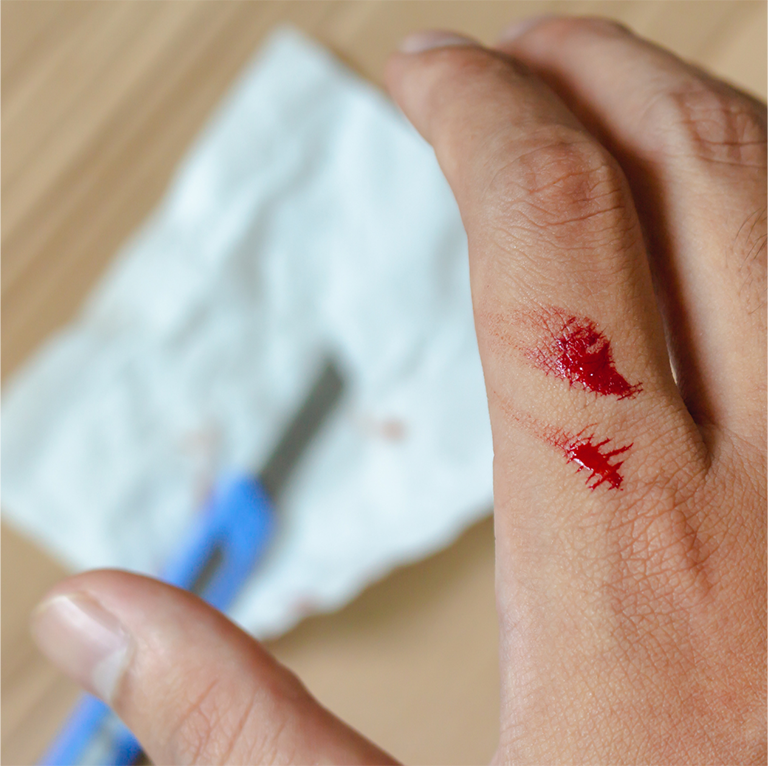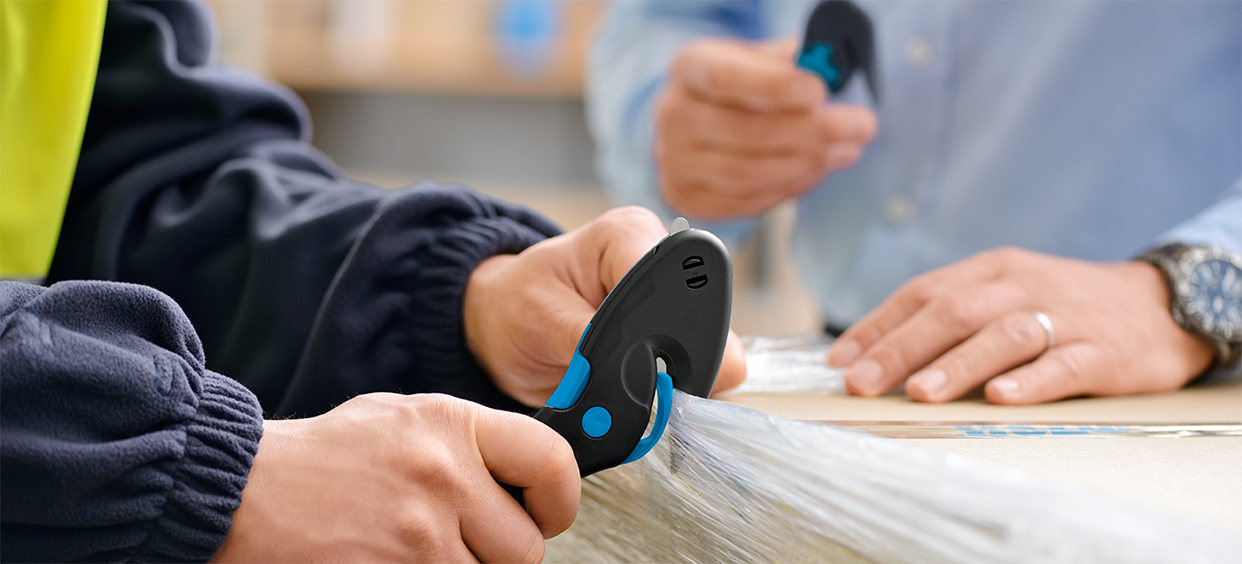
Even the safest safety knives carry risks. It’s just what happens when working with a sharp blade. If you’re in the workplace, focused on getting work done as fast as possible, it’s easy for a costly slip or a mistake to happen.
MARTOR works with industries nationwide, training them to use safety knives and avoid accidents. The more you know, the better you can avoid some of the more common mistakes that happen.
These seven tips for knife safety in the workplace come from years of working alongside industries of all kinds, from the oil industry to the retail industry. Learn how to protect yourself and your employees from avoidable knife-related accidents.
Costs of Lacerations
Before we share our tips, let’s first look at the cost of a laceration.
First, there’s the injured person. They’ll be in pain, possibly suffering from long-term injuries, and skittish when working around knives. After a serious injury, the psychological is just as impactful as the physical.
As for the financial cost of a laceration:
- • The average direct cost of a hospital bill for a laceration is $10,000 (not including stitches -- usually an extra $2,000)
- • The cost of one disabling hand or finger injury varies from $540 to $26,000 per patient, with a series of upward extremity trauma averaging $730,000 per incident.
- • The average hand injury claim is $6,000, and individual workers’ compensation claims reach nearly $7,500
- • The average combined direct and indirect cost of a laceration is estimated at over $32,000


Training your employees and having first-aid kits near workstations is the first step toward preventing serious financial, physical, and psychological damage.
7 Tips for Knife Safety in the Workplace
Help prevent workplace injuries with these seven tips for knife safety in the workplace.
1. Provide training for your employees.
Get training on how to cut with the specific knife you are using and the particular material you are cutting.
Every knife works differently, whether it is a regular utility knife, a retractable safety knife, or scissors.
It is also essential to know how to cut the specific material you are cutting. The proper way to cut paper or plastic differs from carpet or textiles.
2. Avoid distractions in the workplace.
Stay focused. You must stay 100% focused while using a knife.
Ensure that when employees are using any knife, they aren’t constantly being interrupted or have other people around taking their attention away from their work.
3. A dull knife is a dangerous knife.
It might sound strange, but a dull knife leads to far more dangerous techniques than sharp knives. If your knife is dull, you must exert more force into each cut, causing you to lose control over your knife.
To avoid this, keep knife blades sharp, and if using interchangeable blades, keep them on hand and nearby workstations for easy retrieval.
4. Safe cutting techniques prevent injury.
Always cut away from your body if you lose control of the knife. In the heat of the moment, you might think to cut in whatever direction you want quickly, but one slip with your knife in the wrong direction can lead to severe injuries.
5. Always use a stable surface.
Cut your materials on a stable surface, such as a table or cutting board. This will help keep the material you are cutting in place and not moving around.
Using your body or a flimsy base usually leads to knives slipping or missing their target, hurting yourself or the people around you.
6. Safe storage prevents accidents.
Store your knives in a safe place when they are not being used. If you leave them out on a table, you or another worker may accidentally come into contact with it. Always engage the lock on the knife if there is one.
7. Never try to catch a falling knife.
If a knife is dropped, let it drop. Never try to catch a knife that is falling. It is better that it hits the floor or your shoes than for you to catch the blade with your hands.
MARTOR Safety Training


Our team developed videos, brochures, and other training materials for our safety knife products. These materials go in depth about best practices, how to use our safety knives, and how to change their blades.
Every knife we design features an ergonomic design to prevent cramping and the highest level of safety precautions built-in to protect yourself and your employees from accidental knife slips and accidents.
Contact us today for more information about our safety knife training program or products.

Please login to comment.
Don't have an account?
Sign Up for free